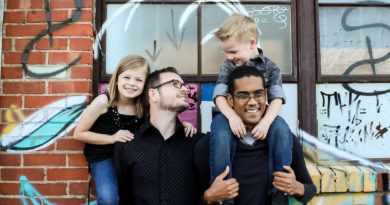Back-to-School: Five Steps Elementary School Parents Can Take to Create a Welcoming School for All Families

Guest Blog: Johanna Eager, Director, HRC Foundation’s Welcoming Schools Program
When parents – especially LGBT parents – learn what my work entails as the director of Welcoming Schools, a project of the Human Rights Campaign Foundation, I tend to get the same response: “I wish you could be at my child’s school. I am afraid that our family will not be accepted and included.”
Although we are working to expand our reach, my HRC colleagues and I simply cannot be at every school. But we can offer resources to support parents and caregivers, and ensure that, as the new school year begins, all families are included and celebrated.
HRC’s Welcoming Schools offers professional development tools, lessons and resources designed to help elementary schools embrace family diversity, avoid gender stereotyping and end bullying and name-calling.
Many of you would no doubt be surprised how common it is for students and their families to feel invisible or excluded- from school registration and permission forms, to lesson plans, books, media and classroom discussions that only show families that have a mother and father.
Embracing family diversity, especially in elementary schools, is critical for students to flourish. Family is the most basic element of self-identification for young children; it shapes and informs their sense of self and who they are in the world.
One of Welcoming Schools’ favorites activities in elementary schools is hosting Family Nights where all families in the school community are invited to come together for an evening to celebrate family diversity. During Family Night we often have a panel representing different kinds of family structures––including single-parent families, multiracial families, adoptive families, bilingual families, two mom or two dad families, families with a transgender child, families with differing physical abilities, military families or families with step parents. Participants discuss how they talk about their family with their children, and how teachers and other families in the school community can support and validate their family structure at home and at school.
These events consistently show that there is no such thing as a “normal” or “typical” family, that all families are unique and the more we can learn about each other, the better we can support one another in conversations — both in conversations at the dinner table and in school curricula, policies and practices.
Even if Welcoming Schools isn’t in your school yet, as a parent, there are steps you can take to make your school more inclusive. As parents prepare for the coming school year, consider these five options:
- Organize a Family Night to share and learn about the different family structures in your school community, and how to better support all families and all children. You can read about one school’s family night experience here.
- Ask your PTA to host a Respect For All Project and HRC Welcoming Schools film night to view films addressing identity-based bullying and how all members of the school community can promote respectful behavior among students.
- Practice how you might respond to children’s questions about family diversity, such as, “Can Two Women or Two Men Get Married?” by checking out our HRC guide here.
- Ask your school if lesson plans about families are representative of the diversity of families in the school district and provide your school with lesson plans that are.
- In addition to ensuring that your child’s school media center has picture books that represent all families, build your own library at home of books that not only reflect your family structure, but also introduce new types of families to your child.
Every student should feel safe talking about their family at school. We know that when a student sees and hears their family included in books, photos on bulletin boards and in the curriculum, they are more motivated and engaged in learning. The partnership between home and school cannot be underestimated.
My colleagues and I are excited for a new school year to begin because we know that teachers and families have the same goal for children – that every child feels safe to learn and grow to their full potential at school.
via Welcoming Schools, A Project of the Human Rights Campaign

